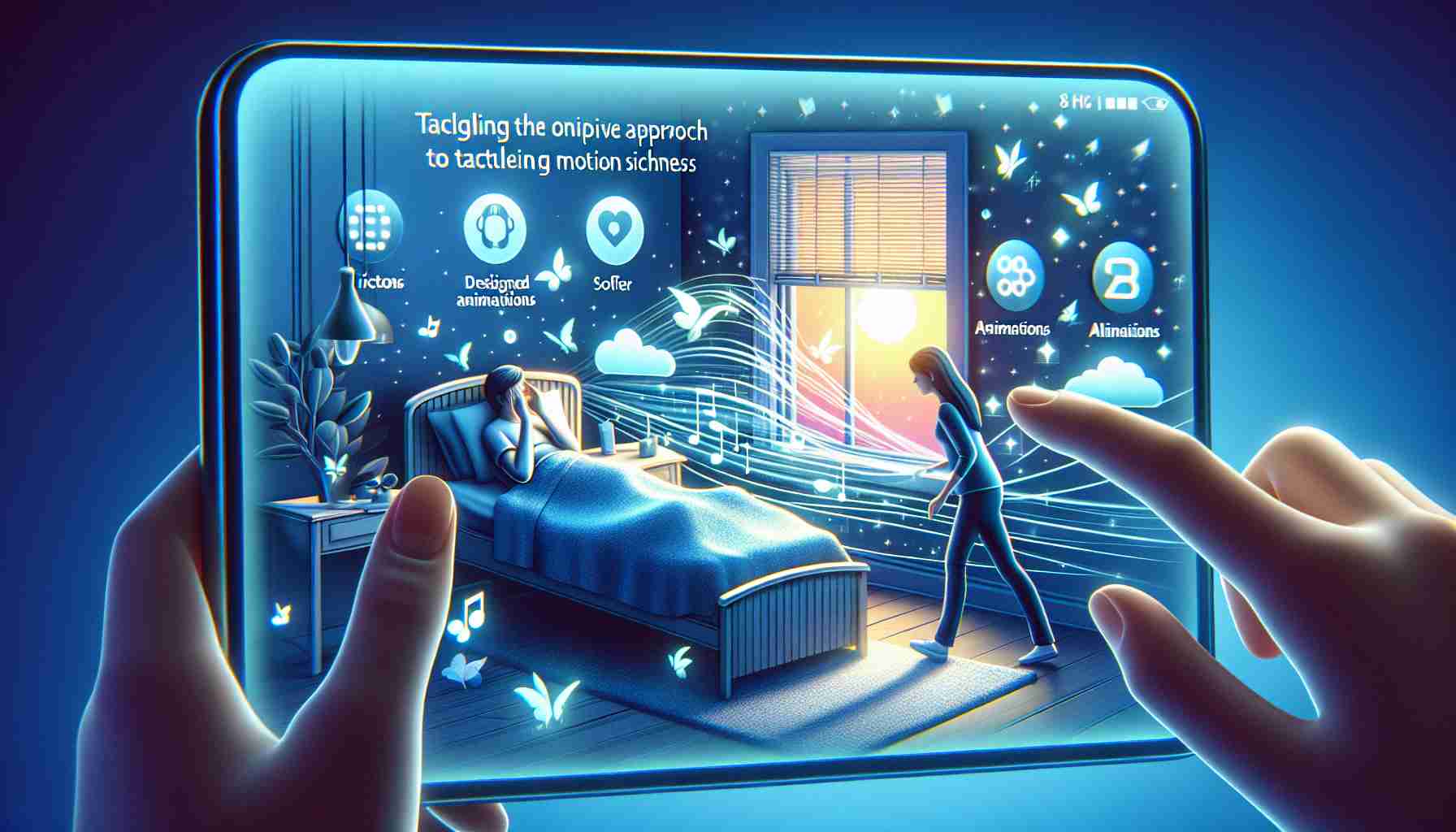Struggling with motion sickness while using your iPhone or iPad on the move may soon be a thing of the past. Apple has introduced a novel solution that aims to minimize the disparity between visual and physical motion perception—a key causative factor for motion sickness.
This cutting-edge feature, named Vehicle Motion Cues, is engineered to synchronize on-screen visual cues with the actual motions experienced during travel. The system capitalizes on animated dots that glide across the device’s periphery, reflecting real-time vehicular movements to mitigate the sensory clash often experienced by passengers engaged with static screens.
Apple’s ingenuity extends to the usability of this feature which can be activated automatically or toggled manually via the Control Center. Although not explicitly confirmed for the impending iOS 18 and iPadOS 18 updates, Apple’s announcement hints at its likely inclusion in the later part of the year.
With the anticipation building towards the World Wide Developers Conference (WWDC) on June 10th, users are keenly awaiting the supposed myriad of advancements that will accompany the new software versions. Not only will these changes enhance the iPhone and iPad experience but are also expected to extend across other Apple platforms including the Mac, Apple Watch, and more.
In tandem with hardware launches, namely the anticipated iPhone 16, there’s also buzz around potential collaborations, such as one with OpenAI, potentially integrating advanced AI features like those based on the ChatGPT model, into Apple’s ecosystem. This commitment to innovation and user well-being indicates that Apple is continuing to forge a path toward harmonizing technology with everyday life.
Key Questions and Answers:
– What is the problem Apple is trying to solve with the Vehicle Motion Cues feature?
Apple is addressing the issue of motion sickness that occurs when there is a disconnect between what the eyes perceive on a screen and the physical motion felt during travel in a vehicle. This disparity can lead to symptoms of nausea, dizziness, and headaches.
– How does the Vehicle Motion Cues feature work?
The feature uses animated dots that move across the screen’s periphery to mirror real-time vehicular movements. This movement on the screen aims to align with the user’s physical experience of motion, thus reducing sensory conflict.
– Can users control the Vehicle Motion Cues feature?
Yes, users can manually toggle the feature on or off via the Control Center, or it can be set to activate automatically.
– Has Apple confirmed the feature’s release date or the iOS version it will be included in?
While Apple has not explicitly confirmed its inclusion in iOS 18 or iPadOS 18, the announcement suggests it may be released later in the year, potentially after the WWDC event.
Key Challenges or Controversies:
– Ensuring that the feature does not become a distraction to drivers or passengers who require focus is a challenge.
– There may also be privacy concerns or controversies over how motion data is processed and stored by the system.
Advantages and Disadvantages:
Advantages:
– Reduction in motion sickness could lead to a more comfortable experience for users prone to this condition.
– Gives users the flexibility to enable or disable the feature according to their sensitivity and needs.
Disadvantages:
– The efficacy of this technology may vary from person to person, and it might not work for everyone.
– If the feature does not perform accurately, it could potentially cause more discomfort.
For further reference and information, you might consider visiting Apple’s official website where they often post announcements regarding their new features and products by following this link.
